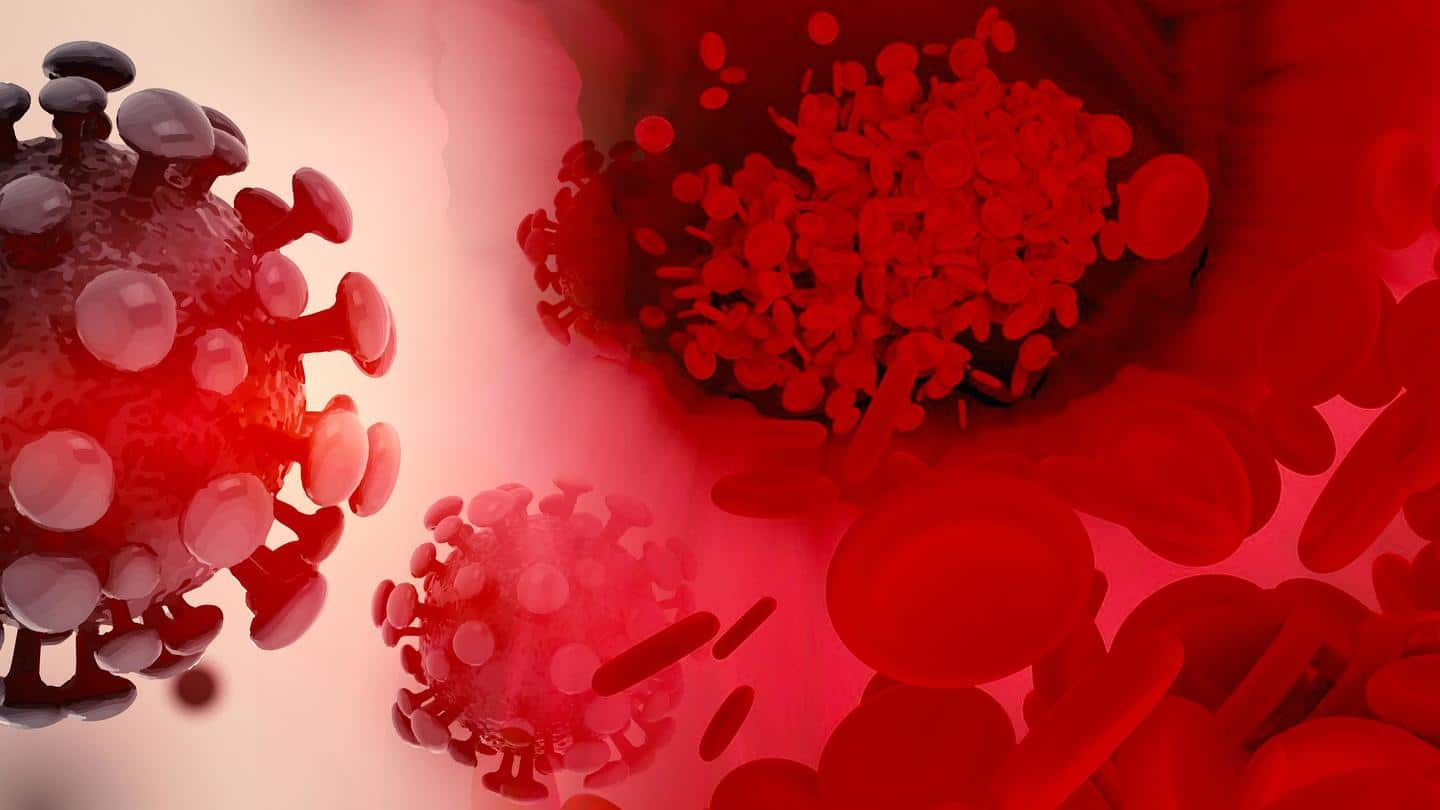
COVID-19 survivors at risk of developing serious blood clots: Study
What's the story
A new study has found people infected with SARS-CoV-2—the virus that causes COVID-19—are at a higher risk of developing serious blood clots for up to six months, even in the case of mild infections. The study published in The BMJ journal also says patients with underlying illnesses and severe COVID-19 infections and those infected during the first pandemic wave are at a greater risk.
Context
Why does this story matter?
Researchers at Sweden's Umea University, who conducted the study, said their findings not only back measures for preventing thrombotic events but also highlight the importance of COVID-19 vaccination. Using Sweden's national registries, the scientists identified over one million people with confirmed COVID-19 infections between February 2020 and May 2021 and compared them to over four million people who didn't have a positive SARS-CoV-2 result.
Main findings
Different types of clots in COVID-19 survivors
The researchers discovered higher risks of deep vein thrombosis (blood clots in legs) for up to three months following COVID-19, pulmonary embolism (clots in lungs) up to six months, and internal bleeding for up to two months. For the study, they first calculated incidences of such events in a control period—before and after COVID-19—and compared them to the rates during different intervals after COVID-19.
Risks
Comparison of thrombotic events in COVID-19 individuals, control group
Later, the scientists also calculated rates of the aforementioned thrombotic events between 1-30 days after the COVID-19 diagnosis in the group with COVID-19 individuals. These results were then compared to the rates in the control group, too. Their findings showed that the risks for deep vein thrombosis, pulmonary embolism, and bleeding events jumped remarkably 90 days, 180 days, and 60 days, respectively, after COVID-19.
Information
Pulmonary embolism risk 33 times higher in first 30 days
The study also found that in the first 30 days after infection, the risk of deep vein thrombosis increased five-fold, while a 33-fold rise in the risk of pulmonary embolism and a nearly twofold increase in the risk of internal bleeding events were observed.
Figures
Occurrence of thrombotic events in both groups
Moreover, the researchers found that a first deep vein thrombosis occurred in 401 COVID-19 group participants, while the same was reported in 267 individuals in the control group. Also, there were 1,761 cases of first pulmonary embolism events in the COVID-19 group compared to 171 among the control patients, while first bleeding events were observed in 1,002 patients with COVID-19 and 1,292 control patients.
Information
Risk higher in severe, first COVID-19 wave cases
The researchers discovered that the clot risk was the highest for individuals who have had more severe COVID-19 infections, particularly during the first wave compared to the second and third waves, when the treatments improved and vaccinations for certain age groups had started.
Mild cases
Mild cases too face the threat of serious clot
An elevated risk of deep vein thrombosis and pulmonary embolism was also found among mild, non-hospitalized COVID-19 cases. However, there was no increased risk of internal bleeding in such cases. As this was an observational study, the researchers could not establish the cause behind the higher clot risk after COVID-19 infection and they also acknowledged numerous limitations that might have impacted the findings.